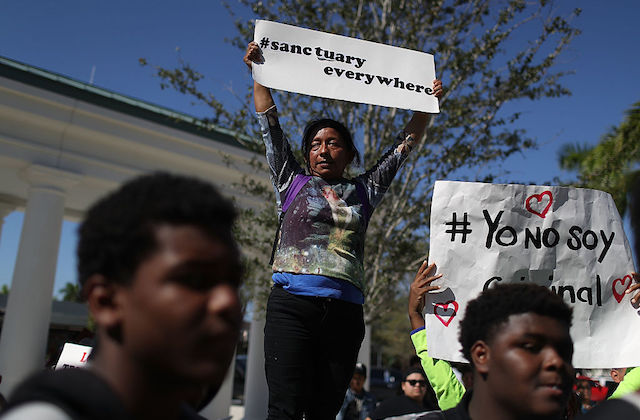New DOJ Memo Retreats From Administration's Original Position on Penalizing Sanctuary Cities

What exactly is a sanctuary city and how might jurisdictions that refuse to comply with federal immigration enforcement be punished? These are questions that cities and states, lawyers and advocates have been wrestling with since Donald Trump issued his January 25 executive order on immigration enforcement. In that document, and in subsequent public statements, the Trump Administration indicated that entities that refuse to comply with immigration enforcement laws would lose access to federal grants.
Yesterday (May 22), Attorney General Jeff Sessions issued guidance that reveals a retreat from the government's original position. In the memorandum, Sessions writes that the Trump Administration cannot withdraw all federal funds from sanctuary jurisdictions. Instead, only grants provided by the Department of Justice (DOJ) and the Department of Homeland Security (DHS) could potentially be withheld. In addition, Sessions' guidance describes sanctuary jurisdictions more narrowly, defining them as entities that willfully violate 8 U.S. Code § 1373. That provision holds that state and local jurisdictions cannot prohibit or restrict any government entity or official from sending or receiving information about a person's citizenship or immigration status to other governmental entities.
The DOJ put nine jurisdictions on notice last month that their federal grants will be endangered if they fail to comply with federal immigration enforcement efforts. But according to the Center for American Progress, many of the activities that sanctuary cities currently engage in—refusing to hold immigrants in local jails upon request of federal immigration enforcement or limiting immigration functions of local cops—do not violate Section 1373.
Even though the Sessions guidance relieves the pressure that many sanctuary jurisdictions have been facing, it also hints that the Trump Administration could try to place conditions on future grants. The guidance notes:
While the executive order's definition of "sanctuary jurisdiction" is narrow, nothing in the executive order limits the department’s ability to point out ways that state and local jurisdictions are undermining our lawful system of immigration or to take enforcement action where state or local practices violate federal laws, regulations or grant conditions.
In fact, the Administration might be using its proposed 2018 federal budget to attack sanctuary cities. The budget contains language that allows DHS and DOJ to require recipients of immigration-related grants to provide the federal government with participants' identifying information and immigration status.
"The budget proposal language is part of a bigger and broader attack," Philip E. Wolgin, managing director for the immigration policy tream at the Center for American Progress, told Colorlines. "The Sessions memo indicated that the government was aware of their limitations in withholding federal funds, but the budget language reveals that they are attempting to change the law in order to go after sanctuary jurisdictions."
Now the battle moves back into the courts, where lawsuits have been filed by jurisdictions challenging the constitutionality of Trump's immigration executive order. In one such lawsuit brought by Santa Clara and San Francisco counties, U.S. District Judge William Orrick III issued a nationwide preliminary injunction on April 25 to block the implementation of the sanctuary provision. Shortly after the DOJ issued the new memorandum on sanctuary cities yesterday, federal lawyers filed a motion with the United States District Court for the Northern District of California to ask for a reconsideration of the nationwide preliminary injunction.
